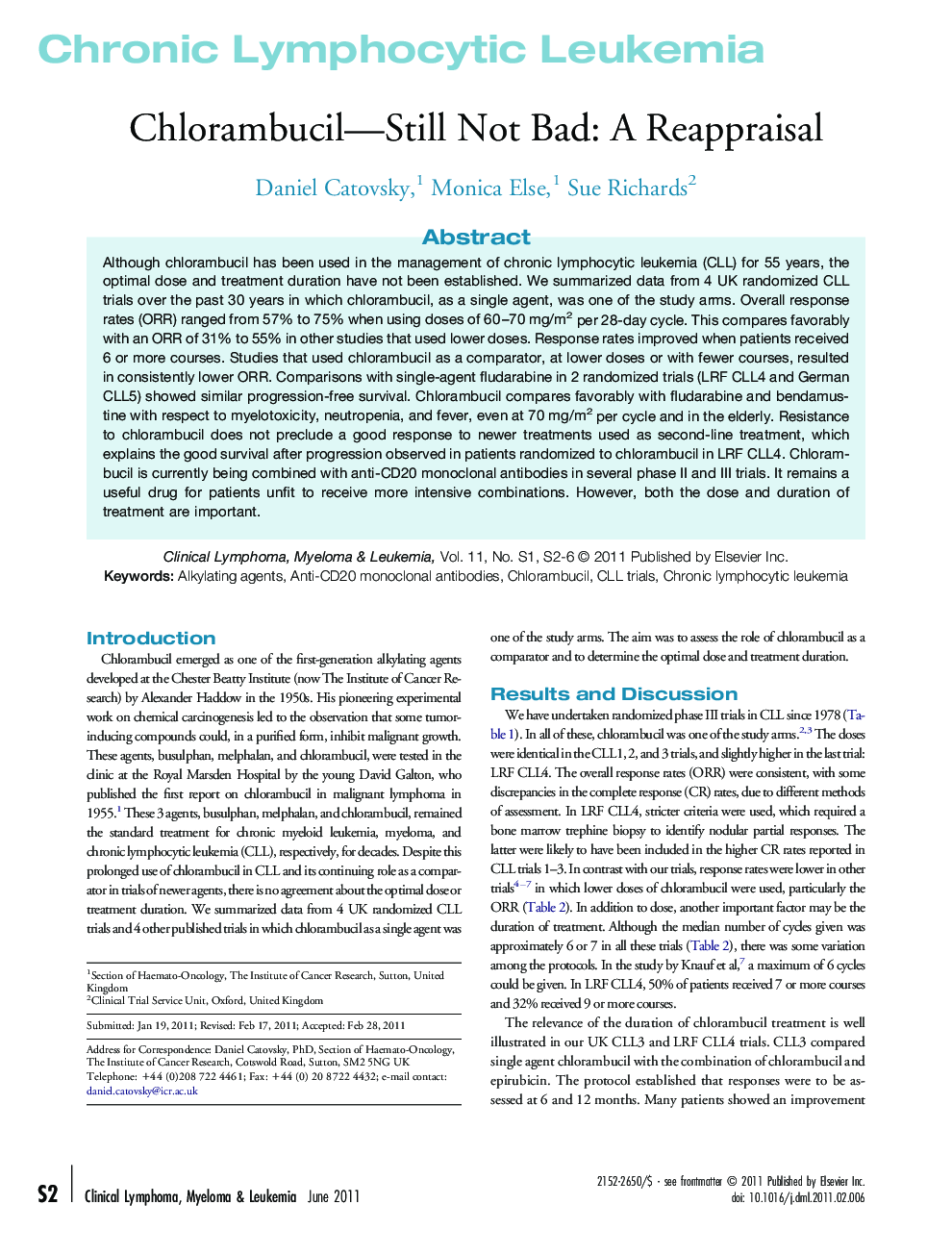| Article ID | Journal | Published Year | Pages | File Type |
|---|---|---|---|---|
| 2755150 | Clinical Lymphoma Myeloma and Leukemia | 2011 | 5 Pages |
Although chlorambucil has been used in the management of chronic lymphocytic leukemia (CLL) for 55 years, the optimal dose and treatment duration have not been established. We summarized data from 4 UK randomized CLL trials over the past 30 years in which chlorambucil, as a single agent, was one of the study arms. Overall response rates (ORR) ranged from 57% to 75% when using doses of 60–70 mg/m2 per 28-day cycle. This compares favorably with an ORR of 31% to 55% in other studies that used lower doses. Response rates improved when patients received 6 or more courses. Studies that used chlorambucil as a comparator, at lower doses or with fewer courses, resulted in consistently lower ORR. Comparisons with single-agent fludarabine in 2 randomized trials (LRF CLL4 and German CLL5) showed similar progression-free survival. Chlorambucil compares favorably with fludarabine and bendamustine with respect to myelotoxicity, neutropenia, and fever, even at 70 mg/m2 per cycle and in the elderly. Resistance to chlorambucil does not preclude a good response to newer treatments used as second-line treatment, which explains the good survival after progression observed in patients randomized to chlorambucil in LRF CLL4. Chlorambucil is currently being combined with anti-CD20 monoclonal antibodies in several phase II and III trials. It remains a useful drug for patients unfit to receive more intensive combinations. However, both the dose and duration of treatment are important.
